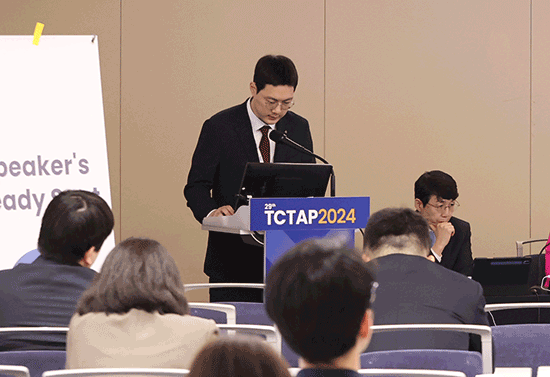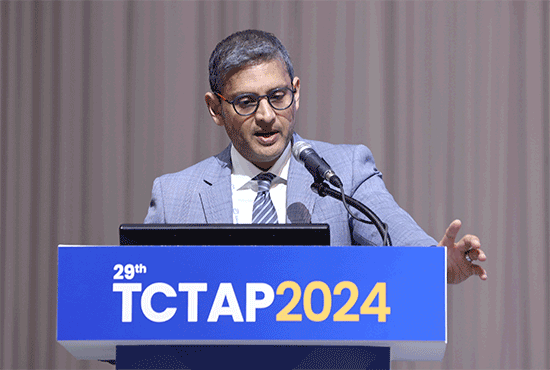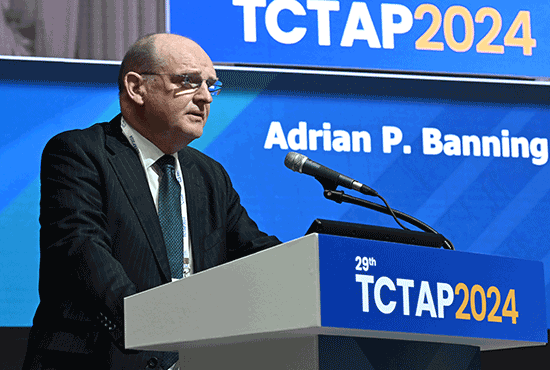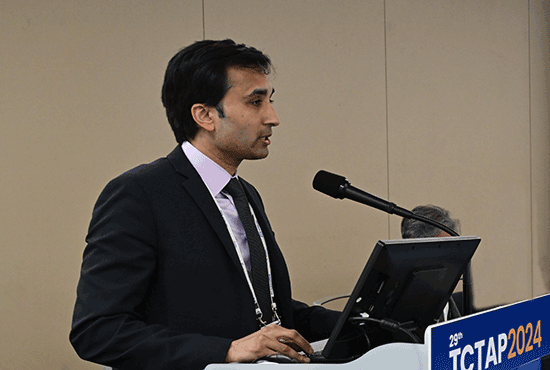TCTAP 2024
Severe AS with Low Valve Calcium Score: Different Prognosis?
Yeonwoo Choi, MD (Changwon Hanmaeum Hospital, Korea), explored severe aortic valve stenosis (AS) with low aortic valve calcification (AVC) score and its different prognosis at TCTAP 2024 on April 27. He stressed that patients with low AVC exhibit distinct clinical characteristics and a higher risk of long-term mortality compared with those with high AVC. Degenerative AS is characterized by excessive valvular calcification, which is also implicated in the hemodynamic progression of AS. Due to the possibility of discordance in echo parameters, AVC score was proposed as a diagnostic algorithm. Approximately 20% of the patients with discordant echo parameters had AVC scores below threshold (Figure 1). Figure 1. Threshold identifying severe aortic stenosis To analyze the prognosis and characteristics of severe AS with low AVC, a total of 1,002 patients were enrolled from the ASAN-AVR registry, a prospective, single-center, real-world registry including all consecutive patients who had undergone surgical or transcatheter aortic valve replacement. 1 in 4 patients with severe degenerative AS had an AVC lower than the proposed threshold for the diagnosis of severe AS. Those with low AVC were more likely to be female, receive hemodialysis, be younger, and had less LV remodeling. During a median follow-up period of 3.8 years, patients with low AVC had a significantly higher risk of all-cause mortality (Figure 2, 3). Figure 2. Clinical outcomes of patients with low and high AVC from the ASAN-AVR registry Figure 3. Hazard ratio of all-cause mortality and MACE by AVC quartiles He pointed out that women had a larger fibrotic component and a smaller calcification component compared to men, and these non-calcified tissues or fibrosis may be the cause of development and progression of AS, considering that several studies on aortic valve tissue volume and composition showed that non-calcific tissue volume was associated with cardiovascular events after TAVR. Meanwhile, there may be other pathophysiological mechanisms in the development and progression of AS that are not fully explained by calcification (Figure 4). He concluded that approximately 1 in 4 patients with severe AS have low AVC and these patients are at a higher risk of long-term mortality. Further research is needed to understand the pathogenesis and progression of low AVC AS. Figure 4. Characteristics and prognosis of patients with low AVC and high AVC Clinical Science All About New Data from Asan Medical Center Saturday, April 27, 10:05 AM ~ 11:25 AM Presentation Room 1, Level 1 Check The Session
June 04, 2024 801


























